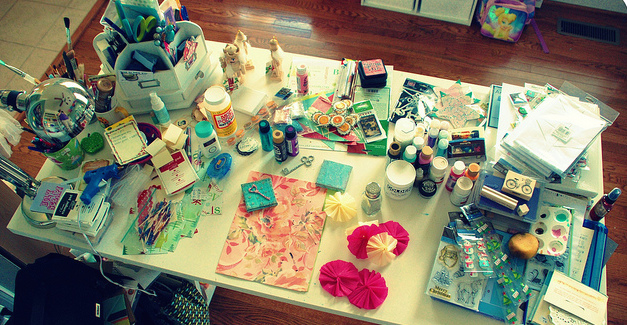
I have read the Bible in church and youth group and para-church ministries. I’ve done Bible seminars and one-day trainings and workbooks. I’ve read the Word in another language and culture, read the whole shebang a handful of times. I’ve done word studies and topic studies and inductive studies and Lectio Divina.
But the longer I read the Bible, the more I realize that the best training I ever got in how to read it was by doing creative work.
Here’s what I learned:
Start with joy, hunger, and longing, not just discipline.
Creative work starts with a spark of fun, a sense of play, a hunger for beauty. Without that spark, creativity is like a car with a dead battery. Without a baseline of joy and play and discovery, the Bible can turn to dust in our hearts.
A lot of people talk about reading the Bible with discipline. There’s truth there. Like creative work, Bible-reading isn’t always immediately rewarding. Sometimes it requires perseverance, lasting through dry patches, and showing up even when you don’t feel like it.
But a whole career of creative work comes from a deep hunger for creativity—not discipline. If you aren’t delighting in creating, something is deeply wrong. If you do not at some point become a child full of passion and exuberance when making your art, it will be flat and dull and lifeless.
If you’re reading the Bible dutifully, with no joy in your heart, be afraid, and figure out what’s gone haywire.
The work is a mirror.
When I did a master’s degree in creative writing, my advisor, Sandra, gave me a critique that grieved me deeply, in the way that all mentors might if they change your life.
She read my stories, and she said, “There’s harshness towards your characters here that needs compassion and kindness.”
I squirmed at her critique, because I didn’t know how to see my characters any differently than I did. I felt color-blind.
Funnily enough, when I started learning deep compassion for myself after the birth of my first child, my writing changed. Now, when I read older work, I see the harsh light I worked under. I see more nuance in my characters, more beauty in their darkness, just as I see myself.
That same harsh light colored every page of the Bible for me. Until I learned to be kinder to myself, to see myself in God’s eyes, to fully embrace the idea that I was loved unconditionally, the Bible condemned me. Reading its pages was like self-harm because I was so incredibly hard on myself.
If we are to read the Bible redemptively, the work of redemption must be taking place in us.
This is important: I’m not saying we try harder to be redeemed.
I’m saying we have a deep, patient knowledge that there is goodness to feast on in the Bible, even when our vision is obscured. I’m saying that if we are color blind, we shouldn’t castigate ourselves for not seeing red. I’m saying that we can ask God’s merciful help for our hearts, and wait expectantly for our healing to be complete. I’m saying that some of us might need special help or time before reading the Bible, because of what we’ve been through.
I’m saying it may be a different path for each person back to the Bible, and it’s no good telling someone to just see harder or see differently or see something when they’re blind.
Smaller is better.
I used to gauge my Bible reading by its bigness. Length, time, depth, insight. The more I did, the better. The better the product, the more acceptable my faith.
But as a writer, I’ve seen that sometimes the most precious pages are ones that are almost nothing.
A year after my second child was born, I wanted to start writing again. My goal? Fifteen minutes, once a week.
I wasn’t going to complete anything with that amount of time.
But as with Jesus, the stone the builder rejected became the chief cornerstone. Fifteen minutes wasn’t enough for any kind of creativity, and yet it was.
I write regularly for well more than an hour a day now, and it’s all because of those first fifteen minutes. When starting a new piece, a scary project, I set the smallest goals I can for myself: 500 words. One email. One bad draft.
When it comes to Bible reading, I assume Big Goals are the most laudable. Every day at 7 am! One chapter a day! Let’s make Scripture a priority!
But do you know when I enjoy the Bible most? When I sneak away from my children with five unexpected minutes, and I find myself lost in a Psalm. When I read the same verse over and over every day through the Book of Common Prayer.
I am reading the Bible more now than I have in years because I decided to be content with less. With tiny bites. With concentrating on developing a hunger for more, instead of a deep weariness from too much. With grace and kindness to myself in a stage of life that’s overflowing and blessed and tiring. With a nod to the scars I gave myself from a deeply uncompassionate way of encountering the Word.
Less. Grace. Enough. And a deep understanding that More will come in its own good time, and not on my own power.
Why Couldn’t the Bible Make Us Passionate?
Think of the creative thing you like doing most. Scrapbooking? Painting? Cooking? DIY refurbishing? Think of the deep concentration you feel when you dive into that activity. Think of the way you connect with a deep part of your being when you are fully immersed. Think of the joy you feel when you have a chance to spend five minutes on a project. Think of the refreshment that comes when you complete a project.
What would it look like if our way of encountering the Bible, spiritual disciplines, God Himself looked like that? Do we believe it’s possible?
If not, why not? Why couldn’t the Bible make us just as passionate as our very favorite things in the world?
Image credit: AForestFrolic
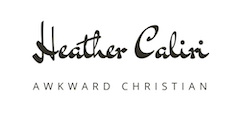

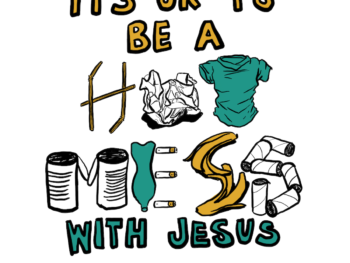



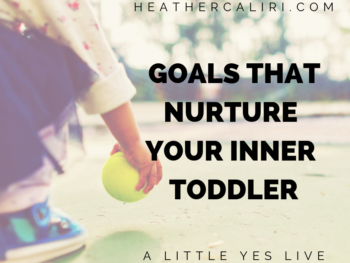
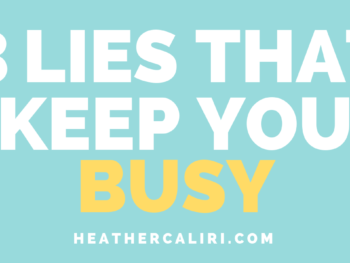


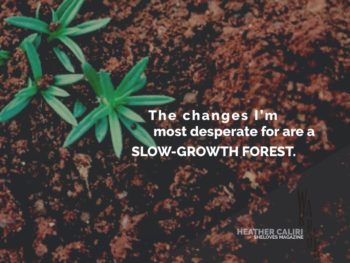

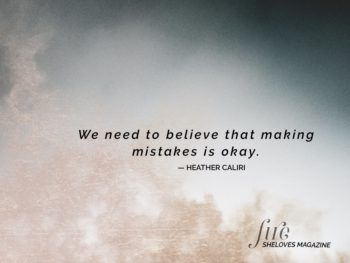
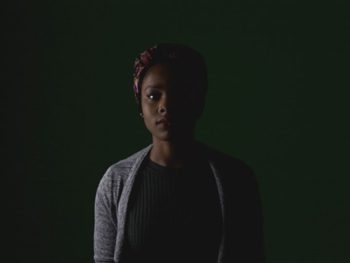
 Why I Wrote an Unlikely Devotional, Unquiet Time
Why I Wrote an Unlikely Devotional, Unquiet Time
Great post Heather. I love the connections you’ve made. And yes, kids really do change things!
Thanks, Ed!